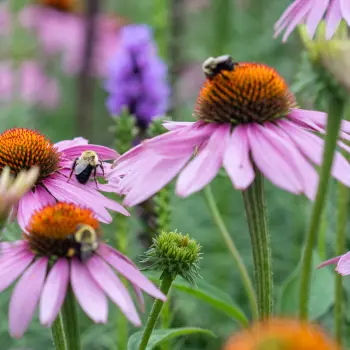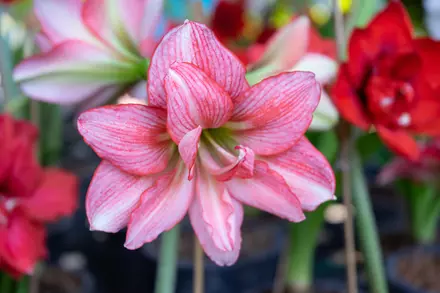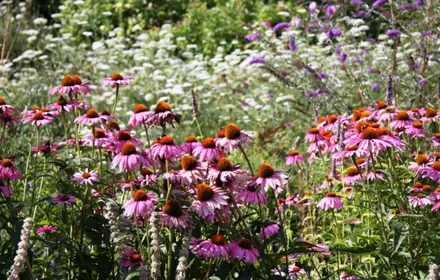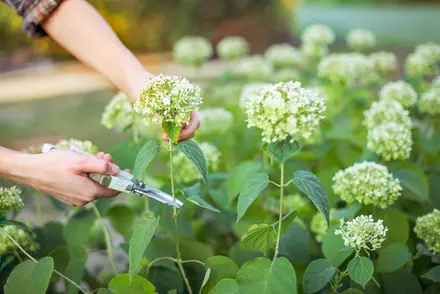Grow Native Flowers for a Thriving Garden

If you’ve ever wondered how to make your garden more vibrant, healthy, and productive, the answer might just be fluttering and buzzing around you. Pollinators—such as bees, butterflies, and even hummingbirds—play a vital role in garden ecosystems. They not only help your flowers bloom but also increase yields in fruit and vegetable gardens. One of the best ways to support these essential creatures is by planting native flowers like black-eyed Susans and milkweed.

Why Pollinators Matter
Pollinators are responsible for fertilizing plants by transferring pollen from one flower to another. This process is critical for the reproduction of over 75% of flowering plants and about one-third of the food we eat. In addition to fruits and vegetables, pollinators also contribute to the reproduction of plants that provide food and shelter for other wildlife. Without them, ecosystems would lose biodiversity, and gardens would struggle to thrive.
In Canada, native pollinators include more than just honeybees. Solitary bees like mason and leafcutter bees, bumblebees, butterflies like monarchs and swallowtails, and even beetles and flies help keep gardens blooming. Sadly, many of these beneficial insects are facing habitat loss, pesticide exposure, and climate change. By planting native flowers, gardeners can take direct action to support their survival.
The Power of Native Plants
Native plants have evolved alongside local wildlife, making them especially beneficial to pollinators. They provide the right nectar, pollen, and habitat that native pollinators rely on. Unlike many ornamental plants, native flowers are also hardy, adapted to Canadian climates, and generally require less maintenance once established.
Two standout native species are:
- Black-eyed Susans (Rudbeckia hirta): These cheerful, daisy-like flowers are a magnet for bees and butterflies. Blooming from midsummer to early fall, they’re easy to grow and provide long-lasting colour. Plus, they tolerate a range of soil conditions and are drought-resistant once established.
- Milkweed (Asclepias spp.): Best known as the host plant for monarch butterflies, milkweed is crucial for their survival. Monarchs lay their eggs on milkweed, and the caterpillars feed exclusively on its leaves. The blooms also attract a wide variety of pollinators, including bees and other butterfly species.
Other great native options include coneflowers, goldenrod, bergamot (bee balm), and wild lupines.

How to Create a Pollinator-Friendly Garden
- Plant in Clumps: Group the same species together. Large patches of flowers are easier for pollinators to spot and access than single, scattered plants.
- Choose a Variety: Select flowers with different bloom times to provide nectar and pollen from spring through fall.
- Skip the Pesticides: Chemical pesticides and herbicides can be harmful—or even lethal—to pollinators. Opt for natural pest control methods and organic gardening practices.
- Provide Water: A shallow dish with pebbles and water gives pollinators a safe place to drink and cool off.
- Go Wild: Leave a small area of your garden a little untidy. Piles of leaves, hollow stems, and bare ground offer nesting spots for solitary bees and other helpful insects.
- Educate and Share: Encourage neighbours to plant pollinator-friendly gardens too. A network of habitats across backyards, balconies, and community spaces can create a pollinator corridor.
The Benefits for Your Garden
The more pollinators you attract, the more successful your garden will be. Expect fuller flower beds, better fruit and vegetable yields, and a garden that buzzes with life and colour. It’s a win-win: you provide food and shelter for vital insects, and they reward you with beauty and bounty.
So, grab a trowel, pick up some native plant seeds, and get ready to welcome the bees and butterflies. With a little planning, your garden can become a haven for pollinators—and a highlight of the neighbourhood.



